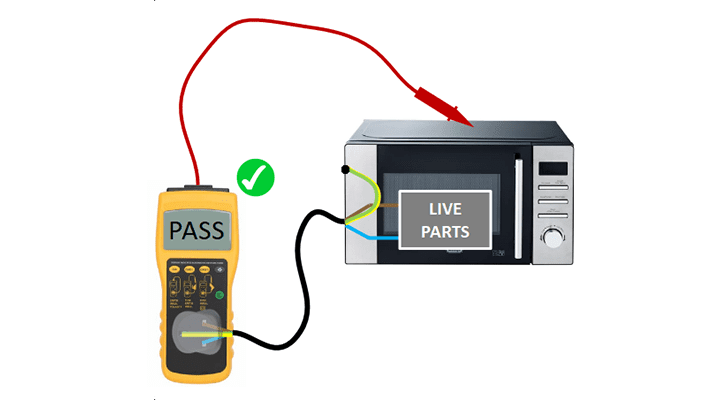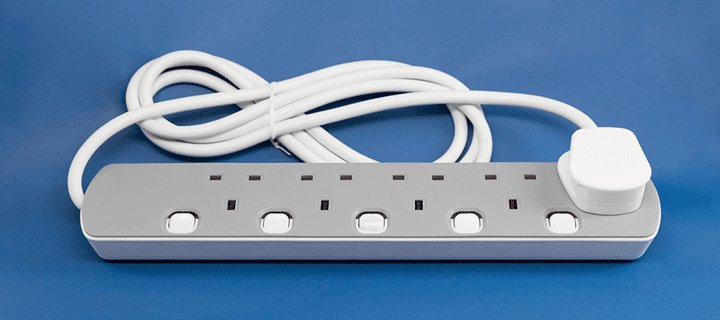When you’re going to carry out PAT testing as part of electrical appliance checks, you might find yourself a little lost in knowing what type of PAT device you need.
While our online PAT Testing Course can help anyone learn everything there is around PAT testing in less than 2 hours, if you’re getting ready to do these tests, you might be wondering what type of device you need.
Thankfully, there is a wide variety of PAT testers on the market, and in this article, we want to highlight which device is best for your organisation based on what you’re testing for.
What does a PAT testing device do?
You use a PAT testing device to test electrical appliances and cables. You should not continue to use any appliance that fails the test until you have repaired it.
The device checks the earth connection on Class I appliances. It checks the insulation is working adequately on Class I and Class II appliances. And it can check polarity on cables.
Some devices can do other tests as well – for example, they can check whether there is too much current flowing from live to touchable parts of the appliance.
PAT Device Classification
Depending on what work you’ll be doing, devices can be classified as Class I or Class II devices. Here’s a little more on what each is:
Class I PAT Devices
A Class I appliance has a single layer of insulation and an earth connection for safety.
Examples of Class I appliances are:
- Refrigerators
- Microwaves
- Kettles
- Irons
- Toasters
A good rule of thumb is that if the item you’re testing would be seen as being fully insulated (i.e. you can’t get shocked touching it), it most likely is Class I.
Class II PAT Devices
A Class II appliance has a double layer of insulation and so does not need an earth connection. These appliances are safer than Class I appliances.
Examples of Class II appliances are:
- Photocopiers
- PCs
- Power tools
- Hair Dryers
- Lamps
Generally, if you’re looking to test a product you know is more insulated to protect you and comes covered in plastic, it may be Class II.
What type of PAT tester should I use?

Some PAT testers simply give a PASS or FAIL result after running the appropriate tests for whatever appliance you attach to the tester. These are very simple to use but you may not be able to make any adjustments for special circumstances, like long cables.
Other testers give a readout of the result in ohms or amps. You need to be able to interpret this result to determine whether the appliance passes or fails the test. You need more training to use this type of tester but it is more flexible and you can make allowances when necessary.
Some testers give both a PASS/FAIL result and a numerical reading of ohms or amps.
Downloadable PAT testers are also available. These devices can transfer the data to a PC where you can store it and process it using a software application. This can save you a great deal of work if you have a lot of appliances to test.
What are volts, amps, ohms and watts?
To PAT test appliances, it helps to understand, in basic terms, how electricity works.
Electricity is the flow of electrons between atoms. Some material, like copper, lets go of electrons easily and is therefore a good conductor.
Voltage is the pressure that starts the electrons moving and then keeps them moving. It is measured in volts. In the UK, the mains electricity supply comes in at 230 volts.
Current describes how many electrons are flowing at any one time in an electric circuit. It is measured in amperes, or amps.
Resistance describes how much a material is opposing the flow of electrons. It is measured in ohms.
Power describes how much energy is flowing in a circuit, and therefore how much work it can do. This is measured in watts.
Voltage, resistance, current and power are all closely related. Voltage is equal to resistance times current. Power is equal to voltage times current.
Some PAT tester measure resistance; others measure current.
What effect do long cables have?
A PAT tester measures resistance to check that the earth connection in a Class I appliance is working properly. To pass the test, the resistance must be less than 0.1 ohms.
The longer a cable is, the more resistance it presents to the flow of electrons. So very long cables could cause an appliance to fail the test if the tester does not make sufficient allowance for the cable.
Do extension leads need PAT testing?

Extension leads are classified as appliances in their own right and should be classed as a Class I appliance.
Which appliances need which tests?
An appliance should have a rating plate that gives important information, including the Class of the appliance. However, if there is no rating plate, you don’t know what Class the appliance is and you should not proceed with any tests. The appliance simply fails the test.
Class I appliances only have basic insulation and relies on an earth for protection. You need to test a Class I appliance to make sure the earth connection is working properly and the risk of electrical shock is vastly reduced. If the earth connection is damaged or corroded then the earth resistance reading will increase. To PASS the measured resistance is usually less than 0.1Ω including the resistance in the cable. This is called an earth continuity test.
A Class II appliance does not have an earth connection so clearly you don’t need to do an earth connection test. You do need to check that the insulation is sufficient between the live parts and touchable parts of the appliance. This is called an insulation resistance test.
Finally, cables should be checked to make sure the live and neutral wires are the right way round. This is called a polarity test.
Do new appliances need pat testing?
Electrical appliances are PAT tested to make sure they are safe to use. Therefore, new equipment should be in a safe condition and will not require a formal portable appliance inspection or test. The HSE recommends only a visual check to verify if any damage has been made to the item during delivery.
Order your online PAT Testing course today!
Our PAT Testing and electrical safety training course is perfect for business owners, health and safety managers and those responsible for PAT testing. Employers can prevent injuries due to electrical faults by regularly carrying out PAT testing. Therefore, ensuring a safer environment for their workforce free from faulty electrical equipment.
Feel free to contact us on 0333 577 5016 or sales@i2comply.com and we will be happy to help.



